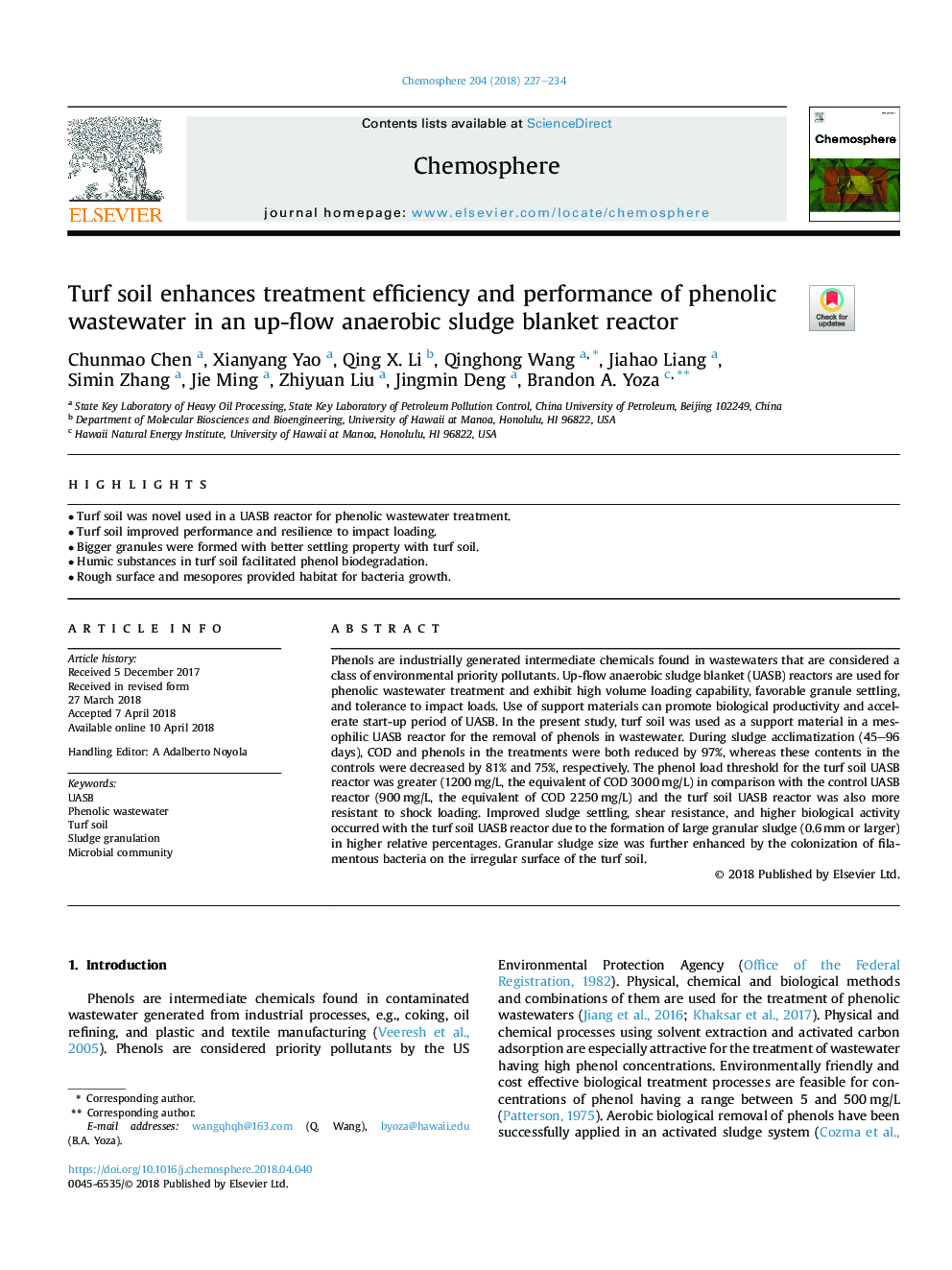| Article ID | Journal | Published Year | Pages | File Type |
|---|---|---|---|---|
| 8851213 | Chemosphere | 2018 | 8 Pages |
Abstract
Phenols are industrially generated intermediate chemicals found in wastewaters that are considered a class of environmental priority pollutants. Up-flow anaerobic sludge blanket (UASB) reactors are used for phenolic wastewater treatment and exhibit high volume loading capability, favorable granule settling, and tolerance to impact loads. Use of support materials can promote biological productivity and accelerate start-up period of UASB. In the present study, turf soil was used as a support material in a mesophilic UASB reactor for the removal of phenols in wastewater. During sludge acclimatization (45-96 days), COD and phenols in the treatments were both reduced by 97%, whereas these contents in the controls were decreased by 81% and 75%, respectively. The phenol load threshold for the turf soil UASB reactor was greater (1200â¯mg/L, the equivalent of COD 3000â¯mg/L) in comparison with the control UASB reactor (900â¯mg/L, the equivalent of COD 2250â¯mg/L) and the turf soil UASB reactor was also more resistant to shock loading. Improved sludge settling, shear resistance, and higher biological activity occurred with the turf soil UASB reactor due to the formation of large granular sludge (0.6â¯mm or larger) in higher relative percentages. Granular sludge size was further enhanced by the colonization of filamentous bacteria on the irregular surface of the turf soil.
Related Topics
Life Sciences
Environmental Science
Environmental Chemistry
Authors
Chunmao Chen, Xianyang Yao, Qing X. Li, Qinghong Wang, Jiahao Liang, Simin Zhang, Jie Ming, Zhiyuan Liu, Jingmin Deng, Brandon A. Yoza,
